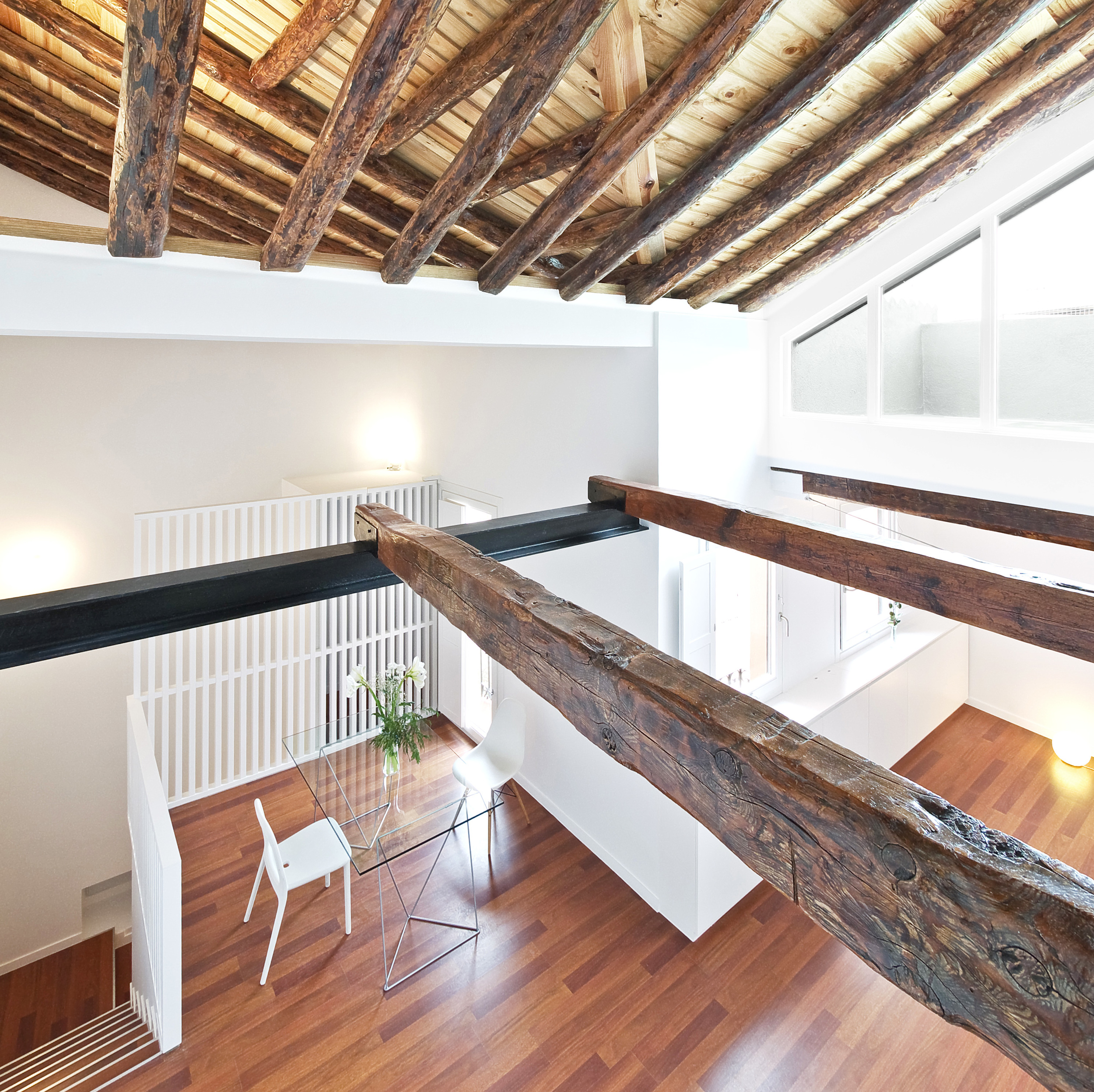
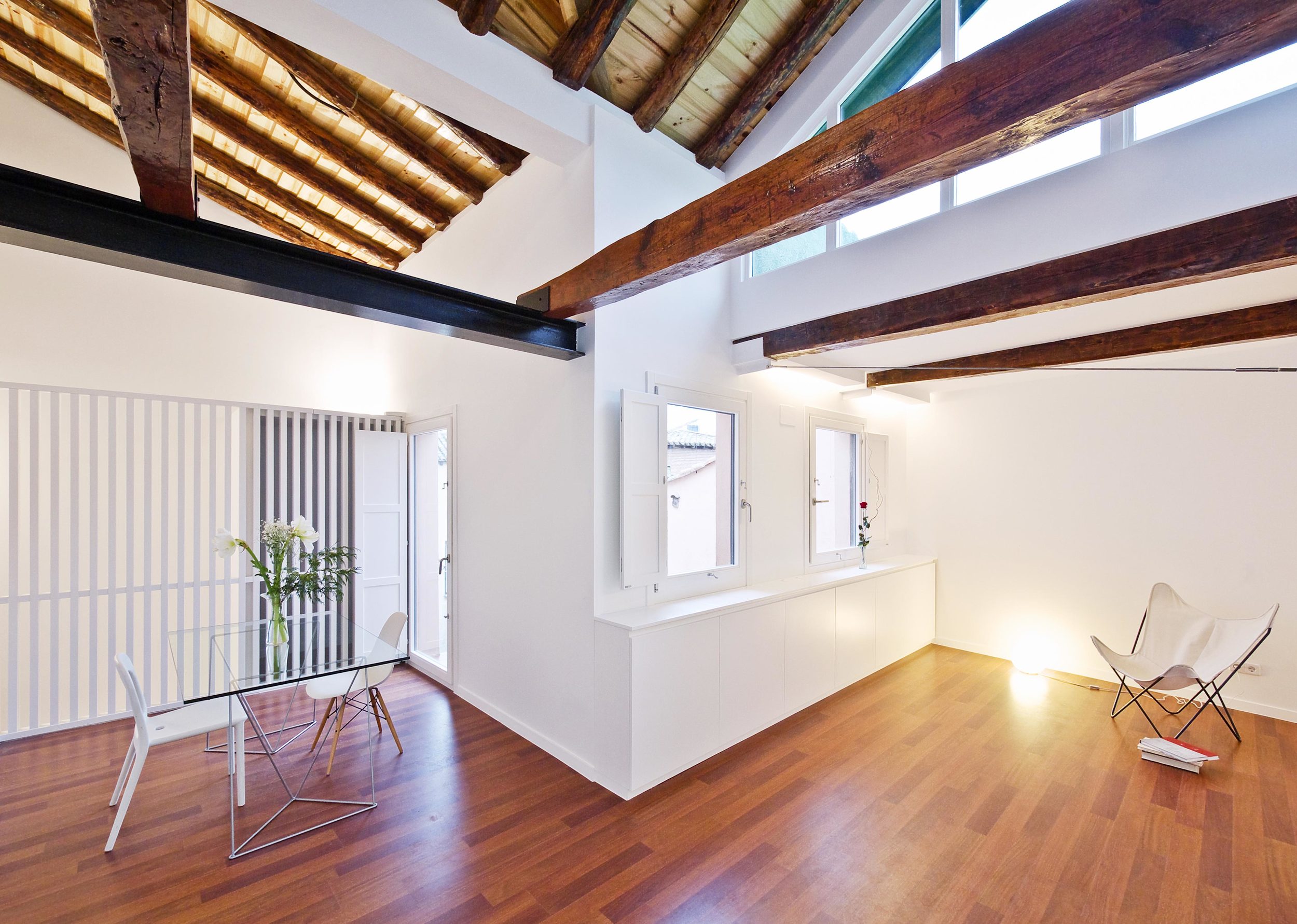
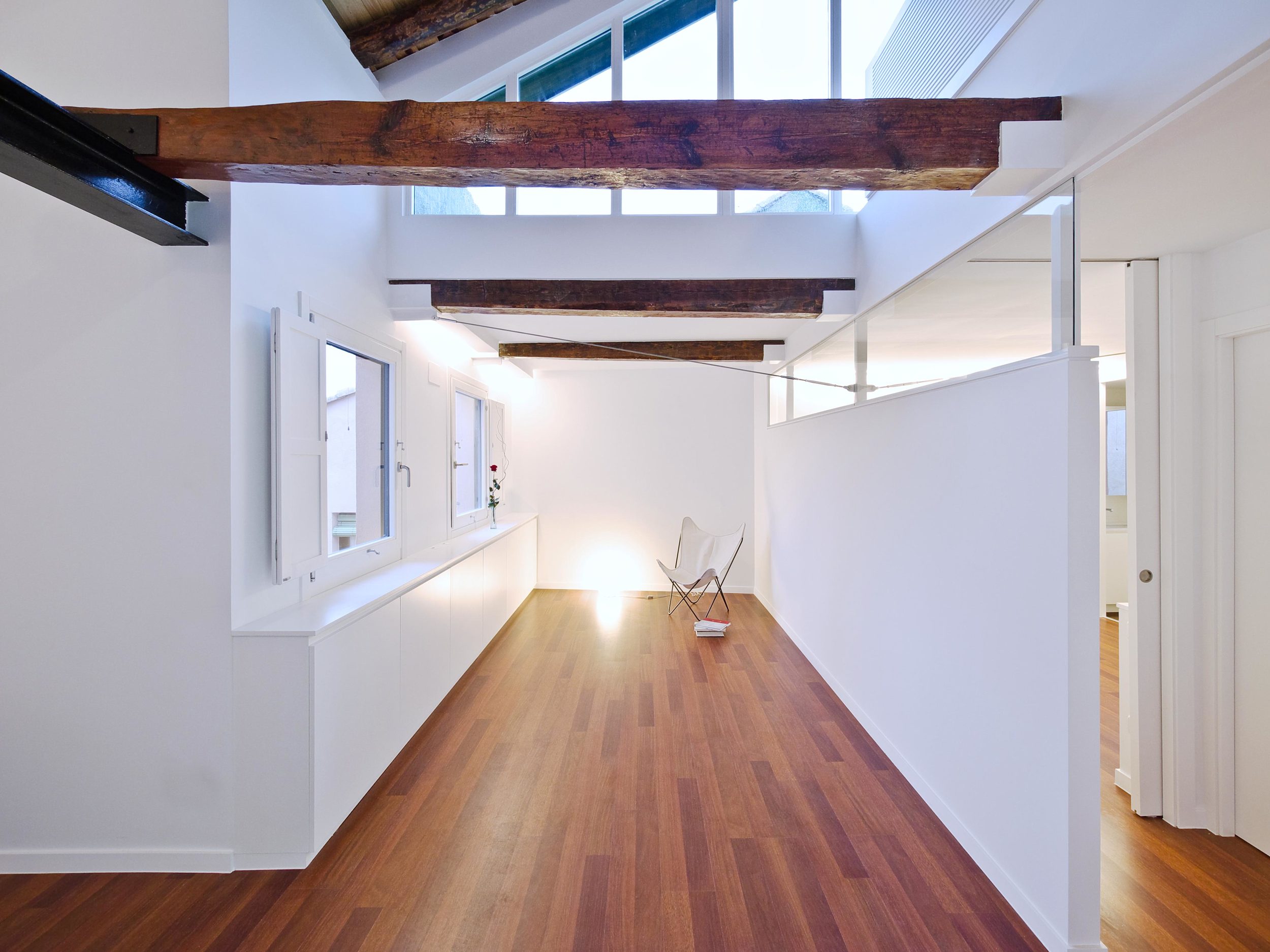
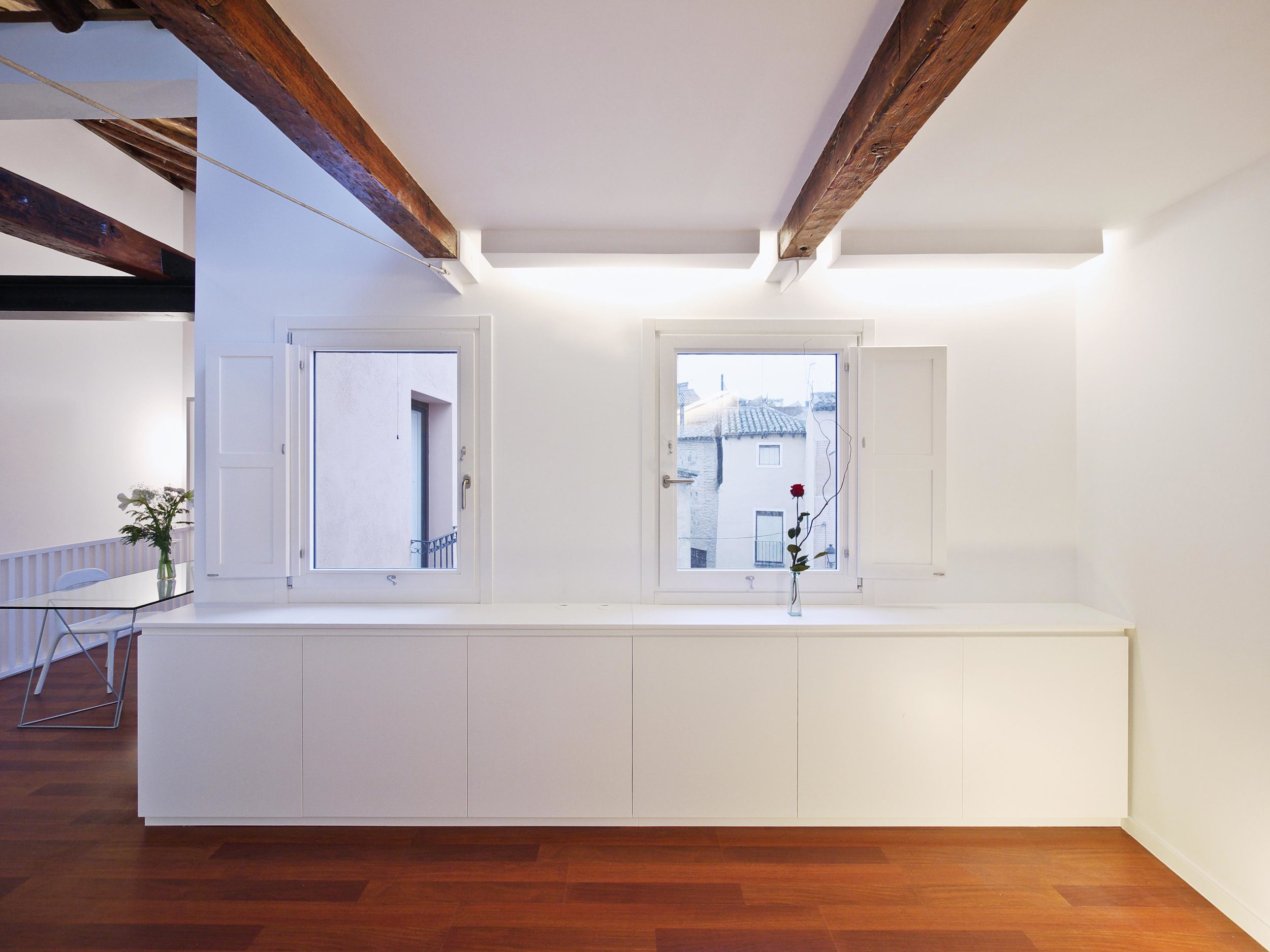

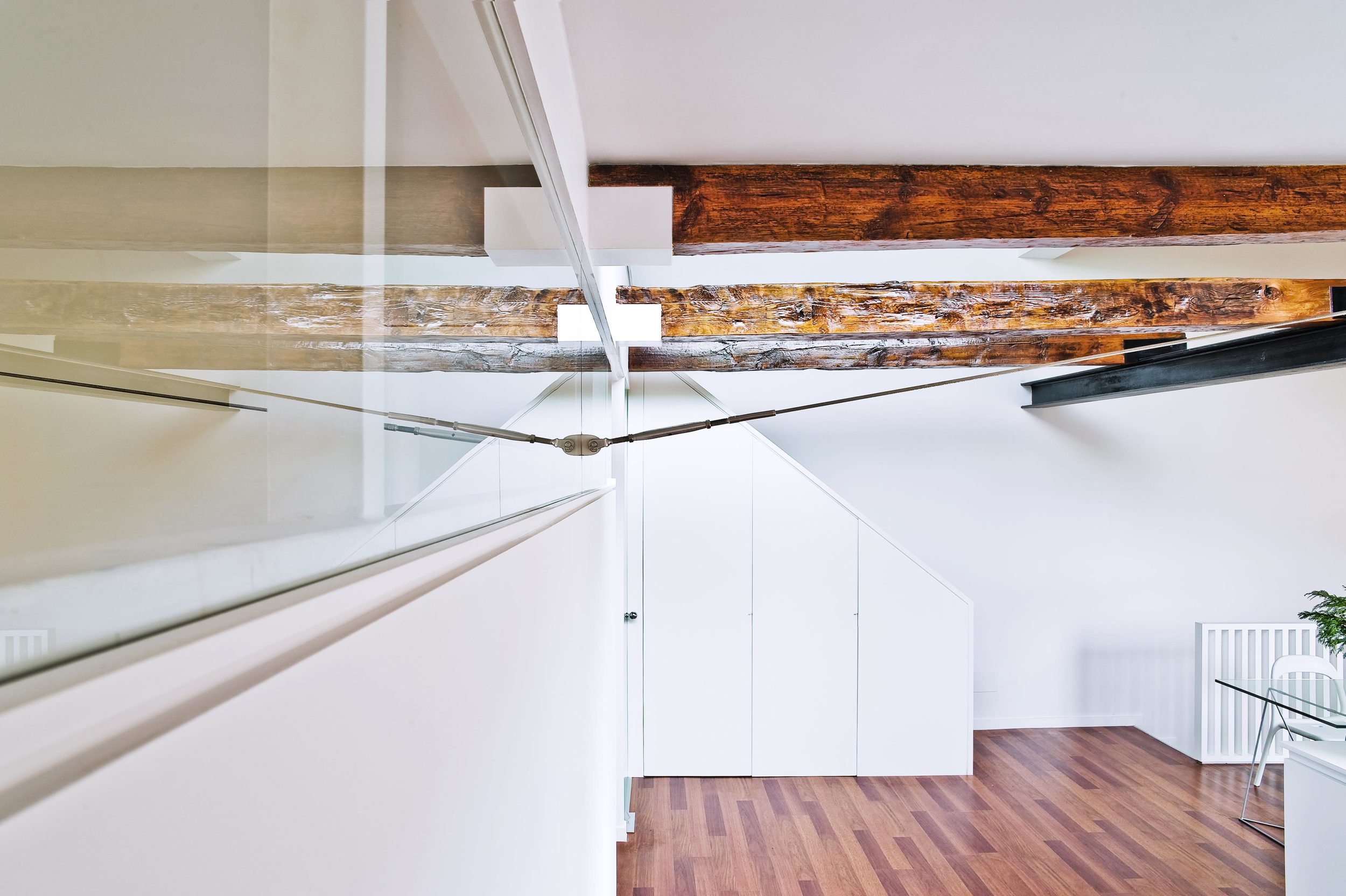

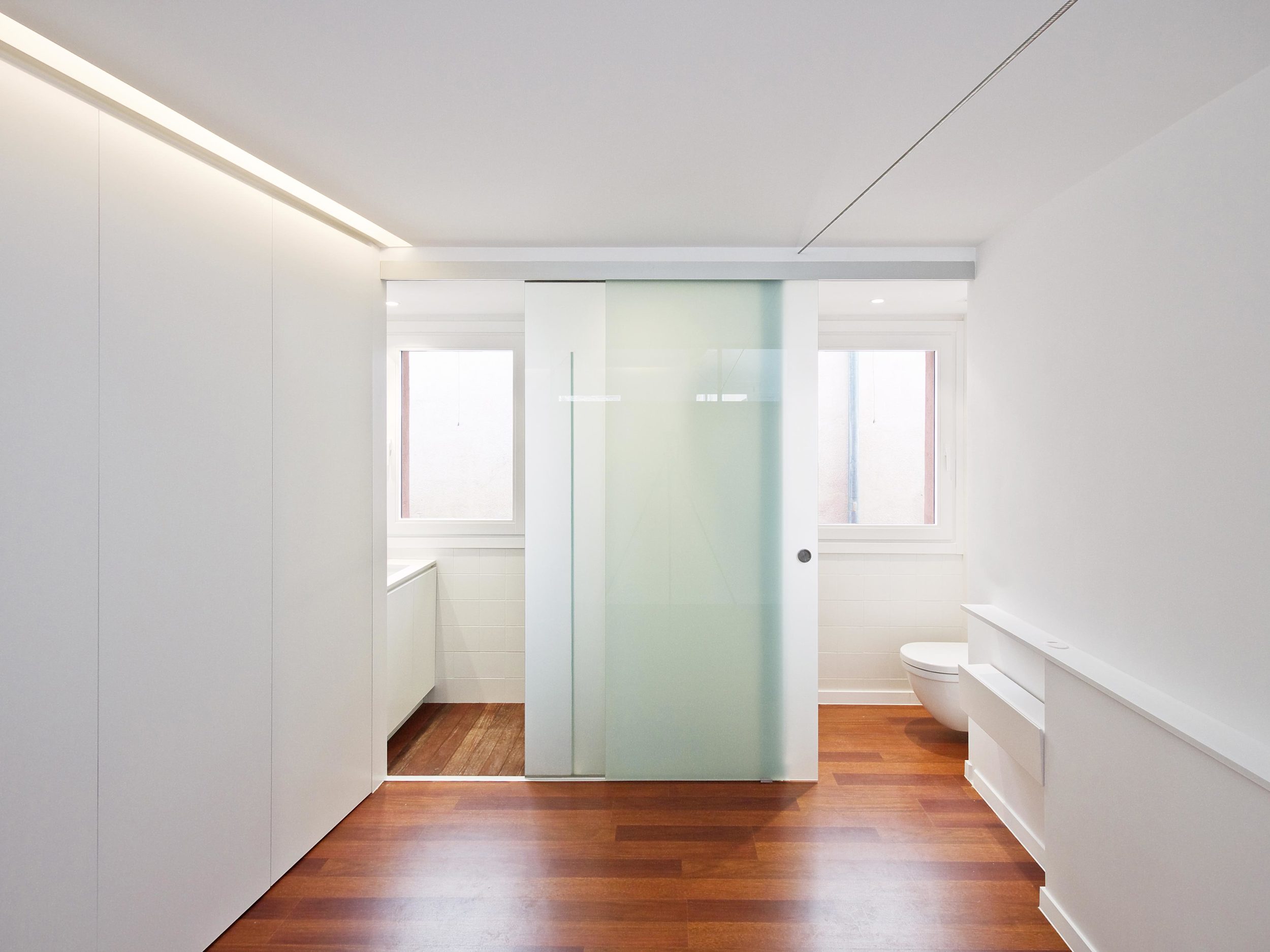
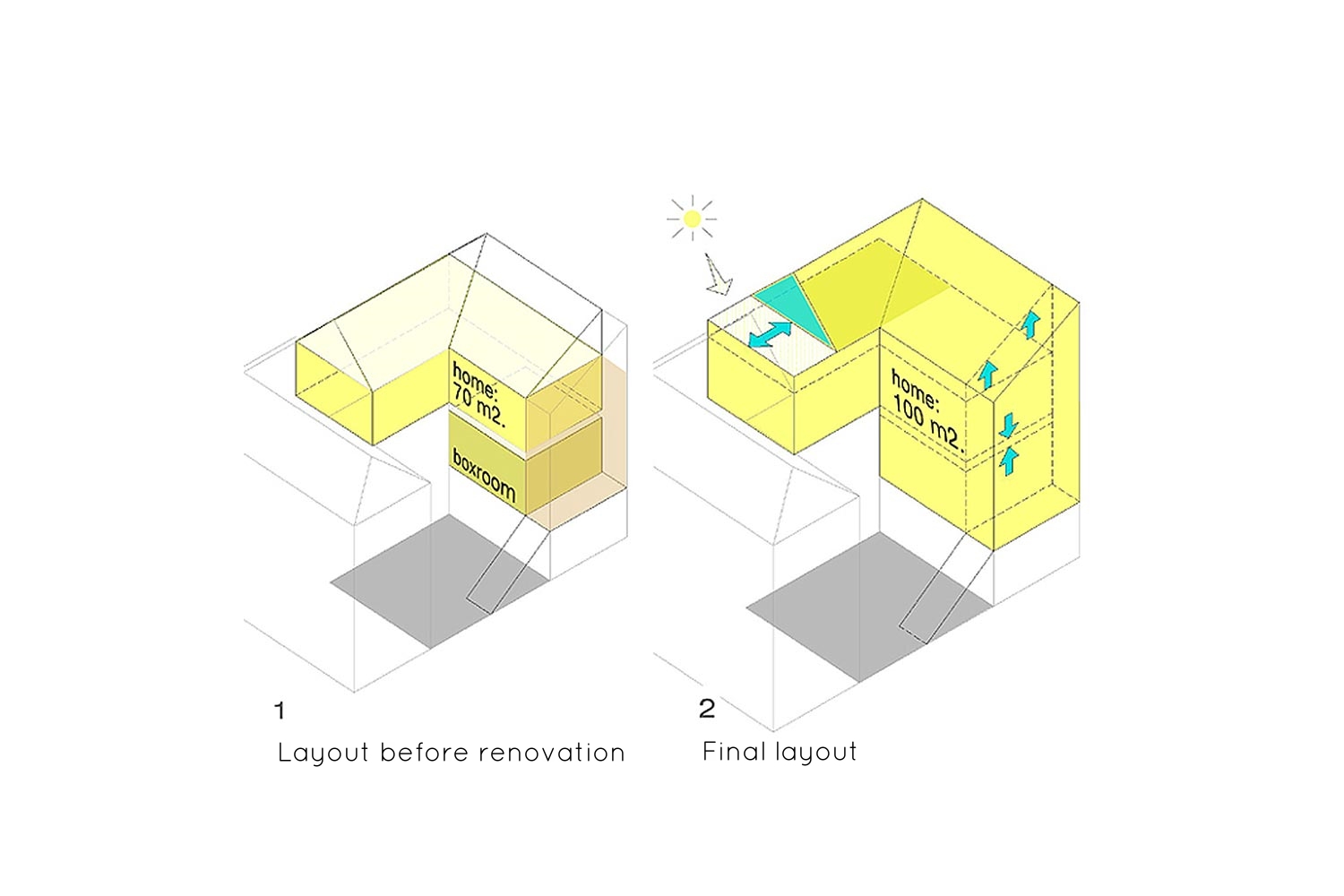
Rehabilitación de una vivienda del siglo XVIII en el centro histórico de Toledo.
RENOVATION AND REFURBISHMENT IN AN EIGHTEENTH CENTURY BUILDING IN THE HISTORIC CENTER OF TOLEDO IN SPAIN.
Area: 100 m2
Design:2010
Rehabilitación de una vivienda del siglo XVIII en el centro histórico de Toledo.
Se parte de una vivienda situada en una antigua casa patio de Toledo de configuración atípica –dado que el patio sólo se encuentra rodeado de edificación por tres de sus lados. El inmueble data de la época barroca (mediados del siglo XVIII) y se encuentra dentro del característico tejido urbano del Casco Histórico de Toledo; ciudad medieval que, con sus estrechas y quebradas calle, permite una escasa entrada de luz natural al interior de las viviendas.
La tradicional casa patio toledana responde, en líneas generales, a un viejo modelo fundamentalmente mediterráneo, de origen romano, que ha sido conservado a través de la Edad Media y cuya característica principal es la existencia de un patio central, alrededor del cual se distribuyen las estancias de la vivienda, a modo de células abiertas. Éstas toman la luz y la ventilación a través de dicho patio, debido a las reducidas dimensiones de las calles circundantes. En nuestro caso, este patio, carecía de los huecos necesarios para cubrir las exigencias lumínicas y de ventilación deseadas.
PROPUESTA Y PROGRAMA
La vivienda constaba de dos partes diferenciadas: una planta de 70 metros cuadrados situada en un segundo piso, muy compartimentada y sin apenas iluminación; y un pequeño trastero situado justo debajo. Ambos espacios se unían mediante una escalera exterior privada. Las ventanas eran escasas y pequeñas y los muros originales, de medio pie de espesor, son de fabrica de mampostería pobre sobre entramado estructural de madera. La cubierta se encontraba oculta tras un falso techo de cañizo.
El proyecto persigue dos objetivos fundamentalmente:
Por un lado, conseguir la mayor cantidad de superficie habitable permitida (dentro de la estricta normativa urbanística de Toledo y del ajustado presupuesto) y, por otro lado, introducir la mayor cantidad de luz natural posible.
El primero se consigue incorporando el antiguo espacio destinado a trastero, situado en la planta primera, y también la escalera de acceso a la vivienda. Además se añade el espacio bajo-cubierta (desmontando la cubierta completamente, restaurándola y construyéndola de nuevo 1 metro más elevada, según proyecto).
El segundo, dado que los huecos de fachada no se pueden modificar según normativa vigente, se consigue a través de una nueva terraza interior, realizada en el plano de cubierta, a la que se accede mediante un gran ventanal orientado a norte.
Toda la distribución interior de la vivienda (dos habitaciones, dos baños, cocina y estudio) gira en torno al salón-comedor que, contando con diferentes ámbitos, organiza las circulaciones; además, éste es el espacio que proporciona luz natural a toda la vivienda a través del nuevo ventanal, sobre el que se filtra la luz procedente de la terraza; consiguiendo así que el cielo azul característico de la zona centro de España se encuentre siempre presente en el interior de la vivienda.
CRITERIOS DE SOSTENIBILIDAD, CALIDAD ECOLÓGICA Y CONSERVACIÓN DE ENERGÍA.
Por la propia naturaleza de las calles de Toledo, el acceso de materiales y maquinaria a la obra es complicado. Las obras se acometen pensando siempre en un uso racional de los materiales y buen manejo de los recursos durante la construcción. La conciencia ambiental está también presente en la reutilización de los materiales existentes.
Reconstruction and renovation of a house - in the historical city of Toledo.
CONTEXT
The project was a house from the Baroque period (mid-eighteenth century) situated in the medieval town of Toledo, with narrow streets that allow a particularly low level of natural light to reach the houses. The house is part of an unusual former patio house configuration, since only three sides are surrounded by building, with a very few windows.
The traditional patio house of Toledo broadly follows the traditional model of a typical Mediterranean house, of old Roman origin, which has been preserved through the Middle Ages. The main characteristic is the central patio, around which the rooms in the home are located. These rooms receive light and ventilation through the yard due to the small size of the surrounding streets. In this particular house, this patio was close to a public area, and the house itself lacked sufficient windows to cover the actual requirements of lighting and ventilation.
PROPOSAL AND PROGRAMME
The overall aim of the project was the complete renovation of the house with two main objectives. The first was to utilize all available space and maximise the use of natural light through high quality architecture. Secondly, the project aimed to renovate key existing elements of the property to maintain the intrinsic architectural qualities of the building in its historical context. We attempted a careful restoration that minimised disruption to the local built environment, and thereby helped to protect the historical urban spaces without giving up any modern aspects of living that are available today.
The house consisted of two parts: one of about 70 square meters located on the second floor of the building (this one was the former house – it was very dark and divided into various small rooms) and a small storage room located on the first floor of the building. Both parts of the house were linked by a private outdoor staircase. The original external walls, half a foot thick, had a wooden structural frame and masonry.
Inside the house, there were two main objectives.
The first objective was to make available the maximum amount of living space while complying with the strict planning regulations of the local Government and the restricted budget. The second objective was to introduce as much natural light as possible.
The first objective was achieved by joining the boxroom and the outdoor staircase to the main part of the home. Also, the roof was fully disassembled, restored and re-built one meter higher to create a space under the roof.
Photographer: Juan Carlos Quindós.
